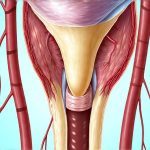Experiencing discomfort anywhere in the body can be unsettling, and when it comes to sensitive areas like the urethra, concern naturally rises quickly. A sore urethra – that tube carrying urine from the bladder out of the body – without obvious signs of inflammation (redness, swelling, discharge) presents a unique challenge. It’s often difficult to understand what’s causing the sensation and whether it warrants medical attention. Many people immediately fear sexually transmitted infections or serious urinary issues, but there are numerous possibilities that don’t necessarily fall into those categories. This article aims to explore potential reasons for this specific symptom, providing information intended to empower you with knowledge and guide your decision-making process regarding seeking professional evaluation.
It’s crucial to understand the difference between soreness and pain. Soreness often describes a dull ache or tenderness, while pain is generally sharper and more intense. The absence of inflammation suggests that an acute infection isn’t likely the primary cause, which can be reassuring. However, even without visible inflammation, persistent discomfort should never be ignored. This article will delve into various potential causes for urethral soreness, emphasizing the importance of accurate self-assessment and appropriate medical consultation when needed. We’ll discuss both common and less frequent possibilities, focusing on what might contribute to this symptom and how to approach it responsibly.
Possible Causes of Non-Inflamed Urethral Soreness
Urethral soreness without inflammation can stem from a surprisingly wide range of factors. It’s not always directly related to the urinary tract itself; sometimes, issues in nearby areas can radiate discomfort that feels like it originates from the urethra. One common culprit is muscular tension or strain in the pelvic floor muscles. These muscles support bladder function and can become tight due to stress, prolonged sitting, incorrect posture, or strenuous activity. This tightness can put pressure on surrounding nerves and tissues, leading to a sensation of soreness in the urethral area. Another possibility relates to mild irritation from everyday products – things like harsh soaps, bubble baths, scented hygiene items, or even certain laundry detergents used on underwear. These irritants may not cause overt inflammation, but they can still sensitize the delicate tissues around the urethra.
Dehydration also plays a significant role. While often associated with inflamed urinary tracts, even mild dehydration can concentrate urine and lead to a feeling of discomfort as it passes through the urethra. This isn’t necessarily inflammatory pain, but rather a sensory awareness that feels like soreness. Finally, some individuals are simply more sensitive than others. What might be a minor irritation for one person could cause noticeable soreness in another. It’s important to consider your own baseline level of sensitivity when evaluating these symptoms. Remember that this isn’t about diagnosing yourself; it is about having informed questions ready if you do decide to see a healthcare professional.
It’s also worth noting the possibility of referred pain. Pain originating from lower back problems, hip issues, or even certain digestive conditions can sometimes be felt in the pelvic region and misinterpreted as urethral soreness. This is why a thorough evaluation by a medical professional is so important – they can help determine the true source of the discomfort. The absence of inflammation doesn’t negate the need for investigation; it simply narrows down the potential causes and guides the diagnostic process.
Exploring Pelvic Floor Dysfunction
Pelvic floor dysfunction (PFD) encompasses a range of conditions affecting the muscles that support the pelvic organs, including the bladder, uterus (in women), and rectum. These muscles are essential for urinary and bowel control, as well as sexual function. When these muscles become weak, tight, or uncoordinated, it can lead to various symptoms, including urethral soreness – even without inflammation. PFD is more common than many people realize, affecting both men and women of all ages, although the causes and presentations differ somewhat between genders.
- Causes of PFD are diverse: pregnancy and childbirth (in women), chronic constipation, heavy lifting, obesity, prolonged sitting, stress, and previous pelvic surgeries can all contribute.
- Symptoms, beyond urethral soreness, might include urinary frequency or urgency, difficulty emptying the bladder completely, lower back pain, abdominal pressure, and sexual dysfunction.
Treating PFD typically involves a combination of physical therapy techniques designed to strengthen or relax the pelvic floor muscles. A qualified pelvic floor therapist can teach you specific exercises (like Kegels, but often more nuanced versions) and provide guidance on proper posture and movement patterns. Biofeedback is another useful tool used in physical therapy that helps patients become aware of their pelvic floor muscle activity and learn how to control them effectively. In some cases, lifestyle modifications like improving bowel habits or reducing stress levels may also be recommended.
The Role of Hydration and Diet
As mentioned previously, even mild dehydration can contribute to urethral soreness. When you don’t drink enough fluids, your urine becomes more concentrated, which can irritate the delicate lining of the urethra as it passes through. This isn’t inflammation in the traditional sense; it’s a chemical irritation caused by highly acidic or concentrated urine. Aiming for consistent hydration throughout the day is crucial. A general guideline is to drink enough water so that your urine is pale yellow in color, but individual needs vary depending on activity level and climate.
Beyond hydration, certain dietary choices can also impact urethral comfort. Foods and beverages that are known irritants to the bladder (and therefore potentially the urethra) include:
– Caffeine
– Alcohol
– Spicy foods
– Acidic fruits (citrus, tomatoes)
– Artificial sweeteners
These substances can exacerbate discomfort even without an underlying infection or inflammation. While eliminating these items entirely isn’t necessary for everyone, paying attention to how your body responds to different foods and beverages can help you identify potential triggers. A food diary might be a useful tool for tracking what you eat and correlating it with any urethral soreness you experience.
Investigating Non-Infectious Urethritis
While the absence of inflammation makes an infectious cause less likely, non-infectious urethritis – irritation of the urethra without infection – is still possible. This can be caused by a variety of factors beyond those already mentioned, such as allergic reactions to spermicides or latex condoms, overuse of certain soaps or hygiene products, or even friction from sexual activity. The symptoms are often similar to those of infectious urethritis (soreness, burning sensation), but without the typical signs of inflammation like redness or discharge.
Diagnosing non-infectious urethritis can be challenging because it requires ruling out other possibilities first. A healthcare provider might perform a urine test to rule out infection and then ask detailed questions about your lifestyle, hygiene habits, and sexual activity to identify potential irritants. Treatment typically involves avoiding the identified trigger and using soothing measures like warm sitz baths or over-the-counter pain relievers (as directed by a doctor). It’s important to remember that self-treating without proper diagnosis can mask underlying issues and delay appropriate care, so seeking professional evaluation is always recommended if symptoms persist.
It’s crucial to reiterate: this information is for educational purposes only and should not be considered medical advice. If you are experiencing persistent urethral soreness, it’s essential to consult with a healthcare provider for accurate diagnosis and personalized treatment recommendations. Don’t hesitate to seek professional help – early intervention can often prevent minor issues from escalating into more serious problems.





















